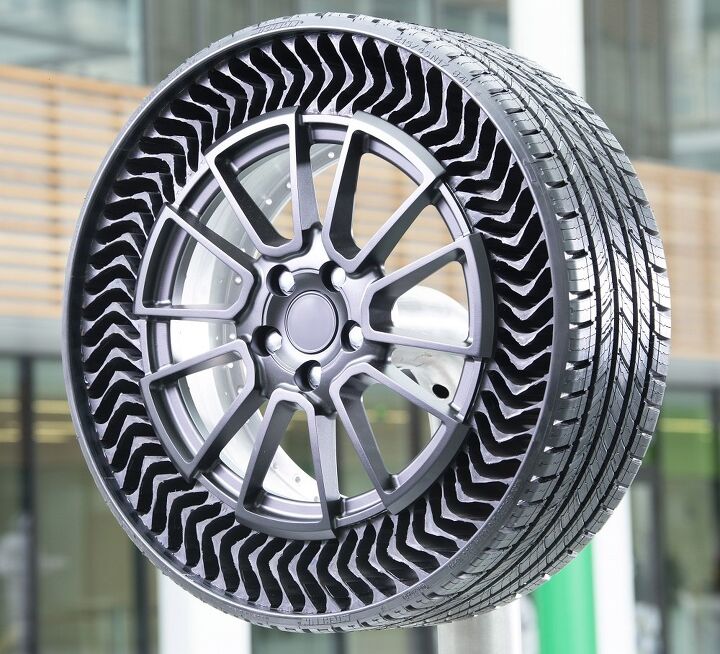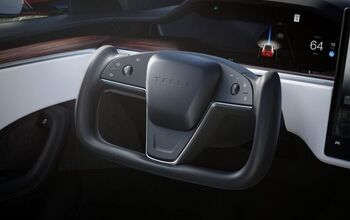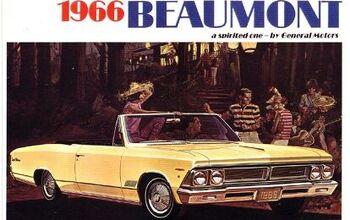Would You Drive With Airless Tires?
The automotive industry has witnessed a revolutionary development with the introduction of airless tire technology. This innovation eliminates the need for air in tires, offering a more stable and reliable driving experience. It effectively addresses the common issues of flat tires and rapid pressure loss, enhancing safety and comfort for drivers.
Michelin's Role in Airless Tire Innovation
Michelin is leading this technological advancement with its Unique Puncture-proof Tire System (UPTIS) prototype. Designed for passenger cars, UPTIS was first showcased at the Movin’On summit in 2019. This marks a crucial step towards making airless tire technology widely available.
The Composition and Advantages of UPTIS
UPTIS distinguishes itself with its composition, merging an aluminum wheel and a flexible load-bearing structure crafted from glass fiber reinforced plastic (GFRP). This structure preserves Michelin's known tire performance while being adaptable for high-speed use, a feature not seen in previous airless tire models.
Benefits Across the Board
UPTIS introduces several advantages:
- For Motorists: Eliminates concerns about tire damage from road conditions.
- For Fleet Owners: Boosts productivity by minimizing vehicle downtime and tire-related maintenance.
- Environmental Benefits: Significantly cuts down tire waste, reducing environmental waste and harm.
Tackling Tire Waste
Each year, a substantial portion of tires are discarded due to punctures, pressure loss, and uneven wear. UPTIS aims to lessen this waste, potentially saving around 200 million tires, equivalent to 2 million tonnes, from disposal.
UPTIS: Shaping the Future of Mobility
Beyond traditional vehicles, UPTIS is also tailored for emerging clean and autonomous mobility solutions. It's especially useful for shared mobility services, including autonomous shuttles and vehicle fleets.
Partnerships and Practical Applications
Michelin's dedication is further demonstrated through its collaboration with DHL, equipping delivery vehicles in Singapore with UPTIS. Real-world tests are underway in various locations like Las Vegas and Thailand, showcasing UPTIS’s durability and effectiveness.
This article was co-written using AI and was then heavily edited and optimized by our editorial team.
More by TTAC Staff
Latest Car Reviews
Read moreLatest Product Reviews
Read moreRecent Comments
- 3-On-The-Tree Old news if it is even true. But from m my time as Firefighter/EMT fighting vehicle fires when it catches fire it is very toxic.
- Akear Chinese cars simply do not have the quality of their Japanese and Korean counterparts. Remember, there are also tariffs on Chinese cars.
- 3-On-The-Tree My experience with turbos is that they don’t give good mpg.
- GregLocock They will unless you don't let them. Every car manufacturing country around the world protects their local manufacturers by a mixture of legal and quasi legal measures. The exception was Australia which used to be able to design and manufacture every component in a car (slight exaggeration) and did so for many years protected by local design rules and enormous tariffs. In a fit of ideological purity the tariffs were removed and the industry went down the plughole, as predicted. This was followed by the precision machine shops who made the tooling, and then the aircraft maintenance business went because the machine shops were closed. Also of course many of the other suppliers closed.The Chinese have the following advantagesSlave laborCheap electricityZero respect for IPLong term planning
- MaintenanceCosts Yes, and our response is making it worse.In the rest of the world, all legacy brands are soon going to be what Volvo is today: a friendly Western name on products built more cheaply in China or in companies that are competing with China from the bottom on the cost side (Vietnam, India, etc.) This is already more or less the case in the Chinese market, will soon be the case in other Asian markets, and is eventually coming to the EU market.We are going to try to resist in the US market with politicians' crack - that is, tariffs. Economists don't really disagree on tariffs anymore. Their effect is to depress overall economic activity while sharply raising consumer prices in the tariff-imposing jurisdiction.The effect will be that we will mostly drive U.S.-built cars, but they will be inferior to those built in the rest of the world and will cost 3x-4x as much. Are you ready for your BMW X5 to be three versions old and cost $200k? Because on the current path that is what's coming. It may be overpriced crap that can't be sold in any other world market, but, hey, it was built in South Carolina.The right way to resist would be to try to form our own alliances with the low-cost producers, in which we open our markets to them while requiring adherence to basic labor and environmental standards. But Uncle Joe isn't quite ready to sign that kind of trade agreement, while the orange guy just wants to tell those countries to GFY and hitch up with China if they want a friend.


































Comments
Join the conversation